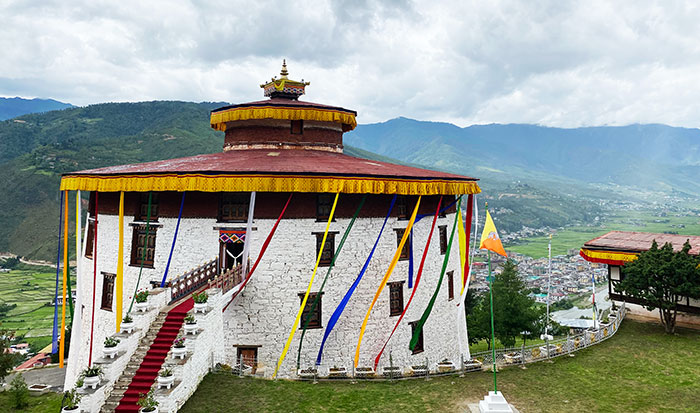Phub Dem | Paro
The National Museum of Bhutan (NMB) in Paro, which has closed to visitors for almost nine years following damage caused by an earthquake in 2011, is now open for visitors.
For visitors whose travel is restricted due to the pandemic could visit the museum virtually on the museum’s website.
The virtual tour feature, according to the officiating director of the NMB, Phendey Lekshey Wangchuk, was to ease crowding and to make the museum accessible to everyone.
He said that the people willing to visit the museum should follow Covid-19 protocols such as wearing facemasks and maintaining social distance.
Built in 1649 by La Ngonpa Tenzin Drugdra, the first Paro Penlop, the Ta Dzong served as a watchtower for Rinpung Dzong.
In 1960, His Majesty the Third Druk Gyalpo Jigme Dorji Wangchuck passed a decree to renovate the dzong and to turn it into the first museum in the country.
The museum underwent a major restoration in 2014 after the structure sustained considerable damage.
The seven-storey building, often called as the only encyclopedic museum in Bhutan, houses the country’s history and treasures such as collections of ethnography, philately, numismatics, textiles, bronze and copperware.
It exhibits many Bhutanese artworks—from thangkas to postage stamps, weaponry to bronze wear, scared treasure relics, including an egg believed to have been laid by a mule in 1928 and an image of Milarepa carved on rhinoceros horn, among others.
The museum houses over 3,000 permanent artworks that represent the cultural heritage over 1,500 years.
Phendey Lekshey Wangchuk said that other than amenities such as modern museum lighting system and security surveillance system, the traditional structure was preserved as it was.
Besides collecting, preserving, interpreting and exhibiting objects, the museum also compiles documents on tangible and intangible heritage of the country.
The Home Minister Sherab Gyeltshen launched a set of books based on colloquiums at the consecration ceremony in Paro yesterday.
The renovation of the museum cost Nu 69.8 million.
The museum has plans to build offsite climatically controlled storage to address the congestion, as it has outgrown its capacity to house all the collection.
In the future, the museum would have a tribal history gallery to showcase the tradition of various regions by their customs, arts and crafts, and lifestyles.


